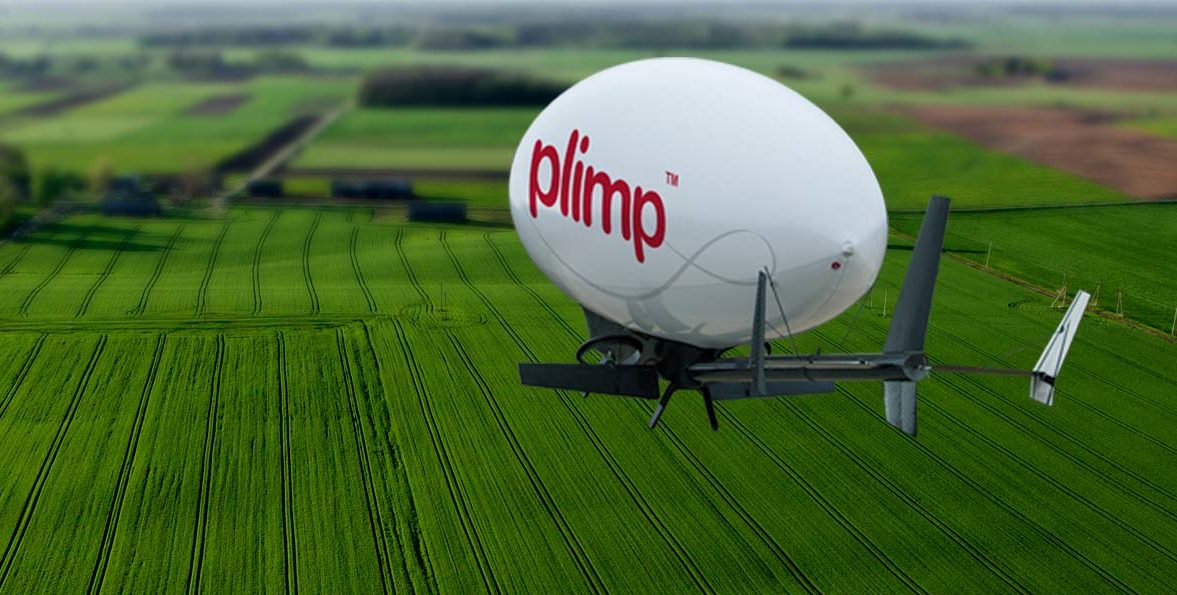
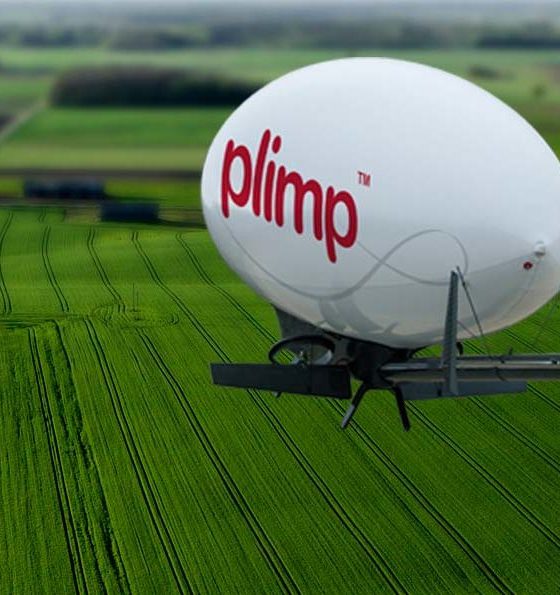
News
Hybrid airship startup builds ultra-safe, ‘plummet-proof’ aircraft with a catchy name
Egan Airships, Inc., a startup company based in Seattle, wants you to consider an aircraft mashup they’ve invented as an all-in-one aircraft solution, and they just may be on to something big. It’s called “Plimp,” and the name describes just what it is: a hybrid plane and blimp flying machine — drone and helicopter elements are also integrated. Using small wings for lift, electric propellers for thrust, and a strong helium-filled buoyant pouch, the Plimp is positioned to fill niche needs in communication and both civilian and military operations.
Thus far, a proof-of-concept Plimp drone was successfully built and demonstrated at the InterDrone 2018 Expo in Las Vegas in September. For commercial viability, Egan intends to use the craft for advertising as its initial market, but the long-term plan is to provide solutions for agriculture along with forest, wildlife, homeland security, and military operational support. The ability of the Plimp craft to achieve vertical takeoff and landing (VTOL) enables many of these capabilities that are not practical for other craft in the airship/dirigible category. As a VTOL craft, Plimps are easier to maneuver in small spaces and only need small clearings to land.
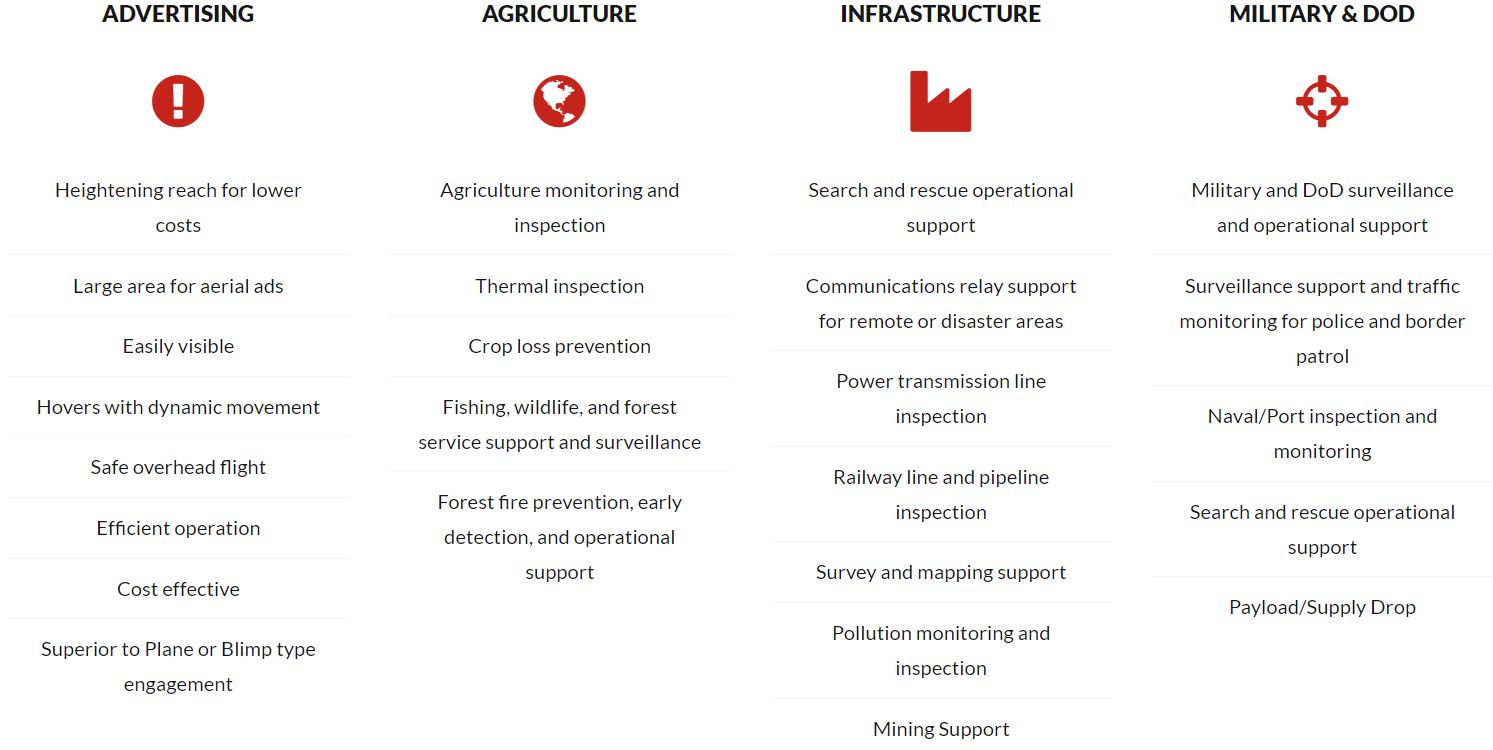
The airship manufacturer is currently seeking buyers to aid the development of the much larger version of its aircraft, the Model J, which will carry up to 10 people, 2 pilots and 8 passengers, specifically. The asking price is $4 million dollars plus overages, paid over the course of four years. Also, buyers must be vetted prior to purchase for an additional $1000 fee. Since the Plimp’s combination of rigid helium pouch and wings makes it a uniquely safe and plummet-proof aircraft, Egan is expecting to have a highly desired product that enables the discernibility it seeks in customer selection.
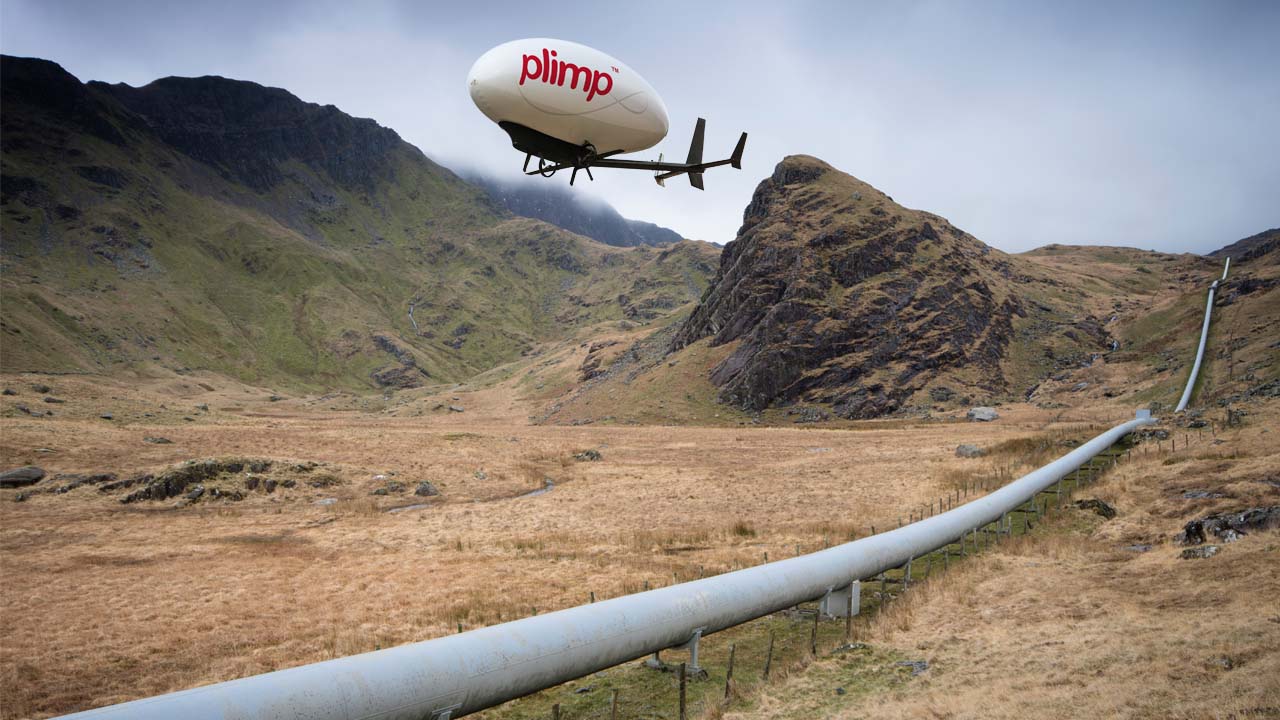
The Plimp drone can cruise for an hour at 30 mph with a 5 lb payload for 20 miles, although its total distance is restricted by drone visibility regulation requiring line-of-sight operation. The performance estimates for the Model J are largely dependent on its payloads. At full capacity (2000 lbs), the aircraft is limited to an 80 mph cruising speed over five hours for a 320 mile travel range. This limitation is highly variable, however. With less weight carried, the Model J can reach 93 mph and travel up to 1300 miles.
James and Joel Egan, the co-founding twin brothers of Egan Airships, conceptualized the Plimp design when they were children. After looking into actualizing their dream later as adults, they found commercially available materials insufficient for what would be required to make their invention work. The availability of strong, lightweight fiberglass composites in today’s markets has now enabled the Egan brothers to finally pursue their craft’s development. To help with the effort, Daniel Raymer, a renowned aerospace design engineer known for his work with Lockheed’s Skunk Works (of SR-71 fame) and the Stargazer plane used for Pegasus rocket launches, was brought on board to finalize the design.
Watch the below video for more about Plimp and its products:

Elon Musk
SpaceX issues statement on Starship V3 Booster 18 anomaly
The incident unfolded during gas-system pressure testing at the company’s Massey facility in Starbase, Texas.

SpaceX has issued an initial statement about Starship Booster 18’s anomaly early Friday. The incident unfolded during gas-system pressure testing at the company’s Massey facility in Starbase, Texas.
SpaceX’s initial comment
As per SpaceX in a post on its official account on social media platform X, Booster 18 was undergoing gas system pressure tests when the anomaly happened. Despite the nature of the incident, the company emphasized that no propellant was loaded, no engines were installed, and personnel were kept at a safe distance from the booster, resulting in zero injuries.
“Booster 18 suffered an anomaly during gas system pressure testing that we were conducting in advance of structural proof testing. No propellant was on the vehicle, and engines were not yet installed. The teams need time to investigate before we are confident of the cause. No one was injured as we maintain a safe distance for personnel during this type of testing. The site remains clear and we are working plans to safely reenter the site,” SpaceX wrote in its post on X.
Incident and aftermath
Livestream footage from LabPadre showed Booster 18’s lower half crumpling around the liquid oxygen tank area at approximately 4:04 a.m. CT. Subsequent images posted by on-site observers revealed extensive deformation across the booster’s lower structure. Needless to say, spaceflight observers have noted that Booster 18 would likely be a complete loss due to its anomaly.
Booster 18 had rolled out only a day earlier and was one of the first vehicles in the Starship V3 program. The V3 series incorporates structural reinforcements and reliability upgrades intended to prepare Starship for rapid-reuse testing and eventual tower-catch operations. Elon Musk has been optimistic about Starship V3, previously noting on X that the spacecraft might be able to complete initial missions to Mars.
Investor's Corner
Tesla analyst maintains $500 PT, says FSD drives better than humans now
The team also met with Tesla leaders for more than an hour to discuss autonomy, chip development, and upcoming deployment plans.

Tesla (NASDAQ:TSLA) received fresh support from Piper Sandler this week after analysts toured the Fremont Factory and tested the company’s latest Full Self-Driving software. The firm reaffirmed its $500 price target, stating that FSD V14 delivered a notably smooth robotaxi demonstration and may already perform at levels comparable to, if not better than, average human drivers.
The team also met with Tesla leaders for more than an hour to discuss autonomy, chip development, and upcoming deployment plans.
Analysts highlight autonomy progress
During more than 75 minutes of focused discussions, analysts reportedly focused on FSD v14’s updates. Piper Sandler’s team pointed to meaningful strides in perception, object handling, and overall ride smoothness during the robotaxi demo.
The visit also included discussions on updates to Tesla’s in-house chip initiatives, its Optimus program, and the growth of the company’s battery storage business. Analysts noted that Tesla continues refining cost structures and capital expenditure expectations, which are key elements in future margin recovery, as noted in a Yahoo Finance report.
Analyst Alexander Potter noted that “we think FSD is a truly impressive product that is (probably) already better at driving than the average American.” This conclusion was strengthened by what he described as a “flawless robotaxi ride to the hotel.”
Street targets diverge on TSLA
While Piper Sandler stands by its $500 target, it is not the highest estimate on the Street. Wedbush, for one, has a $600 per share price target for TSLA stock.
Other institutions have also weighed in on TSLA stock as of late. HSBC reiterated a Reduce rating with a $131 target, citing a gap between earnings fundamentals and the company’s market value. By contrast, TD Cowen maintained a Buy rating and a $509 target, pointing to strong autonomous driving demonstrations in Austin and the pace of software-driven improvements.
Stifel analysts also lifted their price target for Tesla to $508 per share over the company’s ongoing robotaxi and FSD programs.
Elon Musk
SpaceX Starship Version 3 booster crumples in early testing
Photos of the incident’s aftermath suggest that Booster 18 will likely be retired.
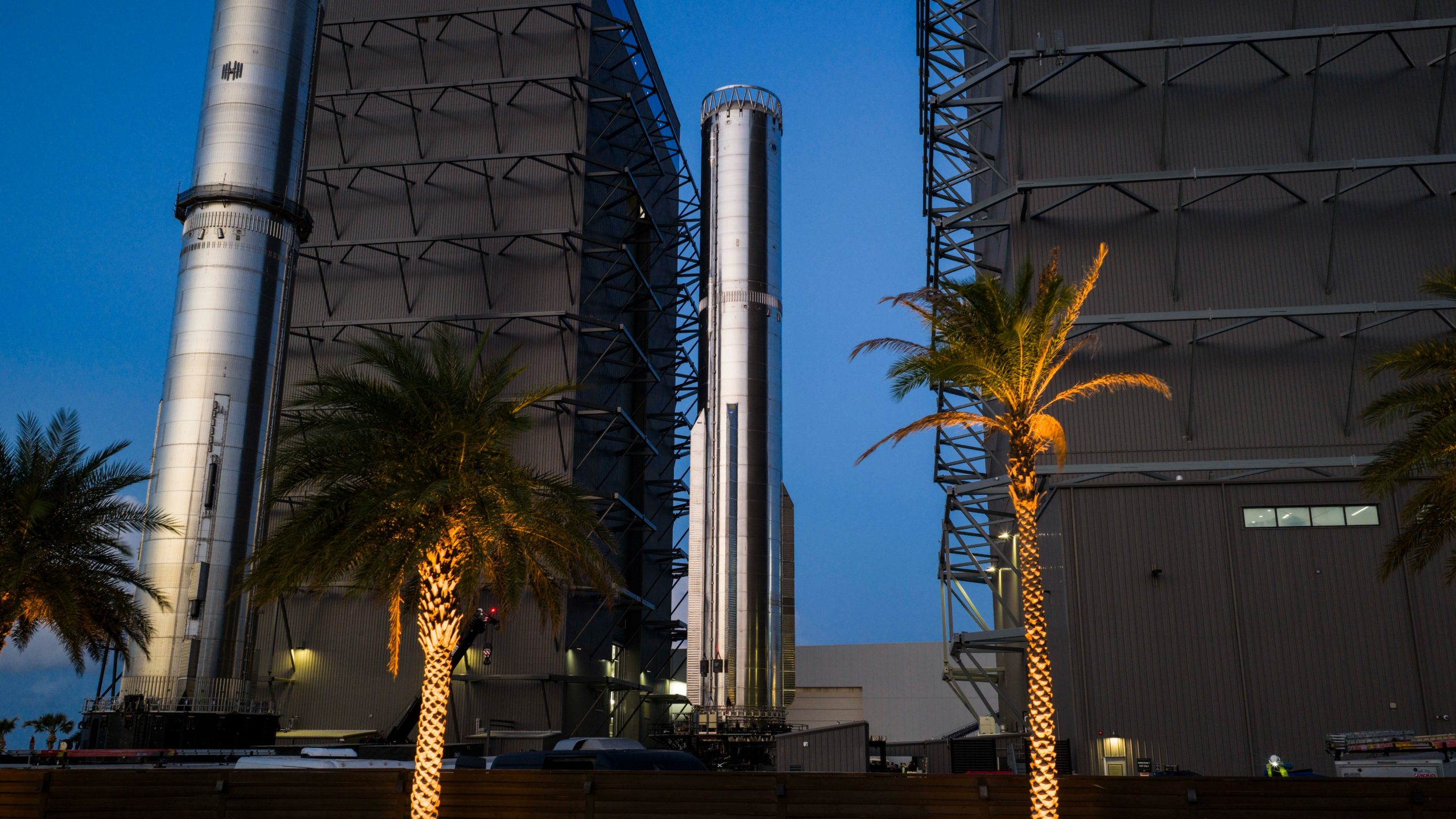
SpaceX’s new Starship first-stage booster, Booster 18, suffered major damage early Friday during its first round of testing in Starbase, Texas, just one day after rolling out of the factory.
Based on videos of the incident, the lower section of the rocket booster appeared to crumple during a pressurization test. Photos of the incident’s aftermath suggest that Booster 18 will likely be retired.
Booster test failure
SpaceX began structural and propellant-system verification tests on Booster 18 Thursday night at the Massey’s Test Site, only a few miles from Starbase’s production facilities, as noted in an Ars Technica report. At 4:04 a.m. CT on Friday, a livestream from LabPadre Space captured the booster’s lower half experiencing a sudden destructive event around its liquid oxygen tank section. Post-incident images, shared on X by @StarshipGazer, showed notable deformation in the booster’s lower structure.
Neither SpaceX nor Elon Musk had commented as of Friday morning, but the vehicle’s condition suggests it is likely a complete loss. This is quite unfortunate, as Booster 18 is already part of the Starship V3 program, which includes design fixes and upgrades intended to improve reliability. While SpaceX maintains a rather rapid Starship production line in Starbase, Booster 18 was generally expected to validate the improvements implemented in the V3 program.
Tight deadlines
SpaceX needs Starship boosters and upper stages to begin demonstrating rapid reuse, tower catches, and early operational Starlink missions over the next two years. More critically, NASA’s Artemis program depends on an on-orbit refueling test in the second half of 2026, a requirement for the vehicle’s expected crewed lunar landing around 2028.
While SpaceX is known for diagnosing failures quickly and returning to testing at unmatched speed, losing the newest-generation booster at the very start of its campaign highlights the immense challenge involved in scaling Starship into a reliable, high-cadence launch system. SpaceX, however, is known for getting things done quickly, so it would not be a surprise if the company manages to figure out what happened to Booster 18 in the near future.








